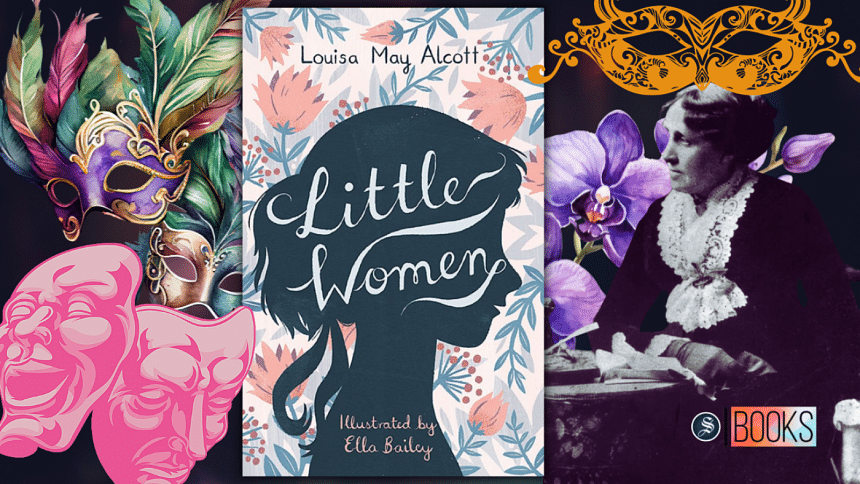There's a Jo March in every woman

"I want to do something splendid...something heroic or wonderful that won't be forgotten after I'm dead. I don't know what, but I'm on the watch for it and mean to astonish you all someday."
When Josephine 'Jo' March spoke those words, she knew her ambitions would take flight in a grand way someday. Little did she know, these words would come to define women for generations to come. On the occasion of the prolific author Louisa May Alcott's 191st birthday, we remember her most famous feminist character, Jo March, from Little Women.
Those who read Little Women would become entangled in the lives of the March sisters. Meg was the oldest sister who was famed for her beauty, but beneath her vanity was a woman with a warm heart. Beth was the third oldest with a shy disposition, yet she possessed a quiet strength which brightened up even the darkest days. Amy was the prim and proper lady who obsessed over manners but never let her kindness be clouded by her occasional vanity.
However, it was Jo March with whom every woman resonated. Whether it was in the past or in the present, Jo March instilled herself in every woman.
What made the hot-headed March sister so relatable to us? She was not as pretty as Meg, nor did she have Beth's calm nature. Her conflicts with Amy brought out the worst in Jo, to the point the latter's ego had endangered Amy's life. Then how did Louisa May Alcott create a character who is relevant and likeable even to this day?
Looking through the lens of history, when Little Women was published in 1868, the world was experiencing a high influx of migration. Women, especially, were migrating to the USA. Most of the female immigrants were poor and living in poverty, but they had the single goal of making a better life for themselves. On the other hand, the women of the upper and middle classes were trapped in the typical norms of the society where they had to focus on their households. Dreams, ambitions, and education were privileges to most women of that time: unaffordable and unattainable. There were very few books or characters that addressed the growing disillusionment of women with their lives.
So, when Little Women hit the stands, Jo March struck a chord with the women. She was not a one dimensional heroine with anger issues. Jo represented those women who felt suppressed by society but also wanted to be good in an unkind world. She had goals which defined her life.
As readers, we followed her teenage years, harbouring her goal to become a writer while navigating the challenges of family, friendship, and love. With her father away to fight a long war, Jo becomes the 'man' of the house. The migrants related to her wish to do something
spectacular, while the upper-class nobility loved Jo's rebellious nature. Jo March transcended societal classes and time, making her mark on every woman who had read Little Women.
At every point, she stood by her mother and sisters like a pillar, yet her vulnerabilities made her relatable to all women. Throughout the novel, Jo bitterly wished she was a man, but she also held on to her femininity. In a striking scene, Jo cried in despair when she had to cut off her long, beautiful hair, which was the only feminine part of her she cherished. At that time, when women were expected to marry for duty, Jo chose a different path. She rejected the advances of her childhood friend, Laurie, because she didn't love him. Instead, Jo stayed true to her values and travelled to the city alone to pursue her writing career. By the end of the novel, even though Jo could not become a writer, her journey came full circle when she became a teacher at a school she opened at her aunt's estate. Also, Jo further defied expectations by marrying an older professor for love, and she lived her life on her terms.
Jo's journey was not relevant only for the women of the 1860s. Till this day, Little Women continues to inspire women worldwide. Jo March became an unsung feminist icon. She wasn't rich, nor was she beautiful. In fact, in the book, Jo was not as talented as her sisters. Yet, it's Jo we relate with because of the layers she possessed. Just as she blossomed into adulthood, the readers also grew with her. As women, we felt her anger at the limitations of her gender, empathised with her when she felt guilty, and were encouraged to stay true to the personal values we held dear, like Jo did. There's a Jo March in every woman, which makes one of the most relatable protagonists in women's literature.
As we advance into the digital world, women are expected to restrict themselves in their new roles of being strong and unemotional. This contrasts with the previous mindset when we were supposed to be emotional and domestic. Both the notions are deeply flawed because they don't see women as complex, multi-faceted human beings but as stereotypes of whatever is in trend. Louisa May Alcott's Jo March reminds us of the dignity and complexities women have. It's okay for us to be both emotional and strong, but it's also okay to be introverts and still take small steps towards our individual goals.
Or just go with the flow without expectations.
With Jo, Louisa May Alcott portrayed how women's dreams and ambitions could fly high without having to give up our true selves. By doing so, she inadvertently made women realise there's a Jo March in every woman, waiting to be freed from the shackles which bind us. The only difference is some of us are free while others are still trying to find that freedom.
Hopefully, one day, they will be liberated. Until then, let's march on!
Tashnuva Islam likes to read, write, or create bad paintings and is a contributor to Daily Star Books and Star Literature. E-mail me at [email protected].

 For all latest news, follow The Daily Star's Google News channel.
For all latest news, follow The Daily Star's Google News channel. 











Comments